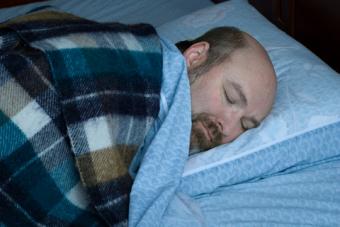
Dream research is relatively new and is uncovering many of the unanswered questions about dreaming. Research on dreams is a difficult undertaking. It is impossible to make a research subject dream and, once they do dream, the researcher can't force the person to remember their dream.
Dream research becomes even more difficult because it is impossible to get objective results. The researcher can't "see" the dream and they have to rely on the dreamer to tell the researcher what they remember about the dream. The researcher has to rely 100 percent on the "observations" and memory of the dreamer.
Key Dream Research Findings
Dream theories have been discussed since the mid 1800s when Sigmund Freud wrote of his opinion that dreams are the outlet for a dreamer's subconscious thoughts. Other dream theories were provided by Freud's contemporaries including Carl Jung, Alfred Adler and Frederick Perls. These dream theories held as the basic tenets of dream research until the late 1960s.
Starting in the 1960s technology started to evolve. Sleep monitoring and brain scanning equipment became more sophisticated and more widely available. Researchers started to rethink some of the previous sleep theories about the causes of dreams. Improved imaging and sensory equipment also gave researchers the opportunity to study various previously unanswered questions about dreams.
Do dreams only happen in REM sleep cycles?
Research in the late 1960s showed that dreams also occur in non-REM sleep cycles, not just in REM sleep cycles.
What do most people dream about?
In the 1970s research started to focus on the content of dreams. Researchers reported that dreamers are very likely to dream about what they do in everyday life, not the unfamiliar situations or unusual images that were thought to be the primary focus of dreams. After several decades of research, psychologist David Foulkes concluded in 1985 that dreams are just a simulation of the waking world.
What age do we start dreaming?
In the 1980s and 1990s children ages 3 to 15 were awakened during sleep studies and asked to recall their dreams.
- Pre-school age children were usually not able to recall their dreams, with only 15 percent being able to tell the researcher about their dreams.
- Children ages 6 to 9 usually don't remember dreaming. If they do remember their dreams, they report relatively simple dreams.
- Children ages 10 and older are more likely to have dreams that are similar to adult dreams in content, length and type of emotion carried throughout the dream.
What is the purpose of dreams?
Many researchers over the years including Carl Jung and Frederick Perls have felt that dreams have a psychological function. Researchers in the early 1990s started to question this function based on their research findings that most people don't remember their dreams. One researcher published the theory that dreams themselves don't solve problems but, in fact, the dreamer comes to the solution after they wake up.
Does the content of a person's dreams change over the years?
By analyzing dream diaries in the late 1990s and the early 2000s, researchers have concluded that a person's dreams are pretty much the same over long periods of time - even for years. The dreams tend to include the same:
- Friends and family members
- Types of activities, like playing a specific sport
- Types of social interactions, like friendliness or aggressive or sexual
Can people with brain injuries still dream?
Research shows that people can dream even if have large portions of their brain are damaged. Injuries in certain areas of the brains can change the visual part of the dream. In the late 1990s, several researchers concluded that there is a specific neural network that is needed for dreaming.
Is there a dream center in the brain?
In 2004 researchers at the University of Zurich decided that dreams were created in an area deep in the back half of the brain. The researchers reported in the Annals of Neurology that a 73-year old patient had lost several brain-controlled functions, including dreaming, after a stroke. She regained many of the functions after a few days, but not dreaming. The researchers monitored her sleep for six weeks. She continued to have REM sleep, but she did not dream. The loss of the ability to dream because of damage to the brain is called Charcot-Wilbrand syndrome. The researchers felt that this confirmed that dreaming and REM sleep are controlled by different systems in the brain.
Other Resources on Dreams
- Learn about the role of the human thalamus on sleep
- Find out about the stages of sleep
- Learn about REM dreams
- Discover more about the types of dreams
- Read what causes dreams







